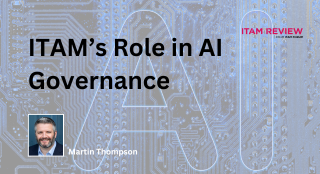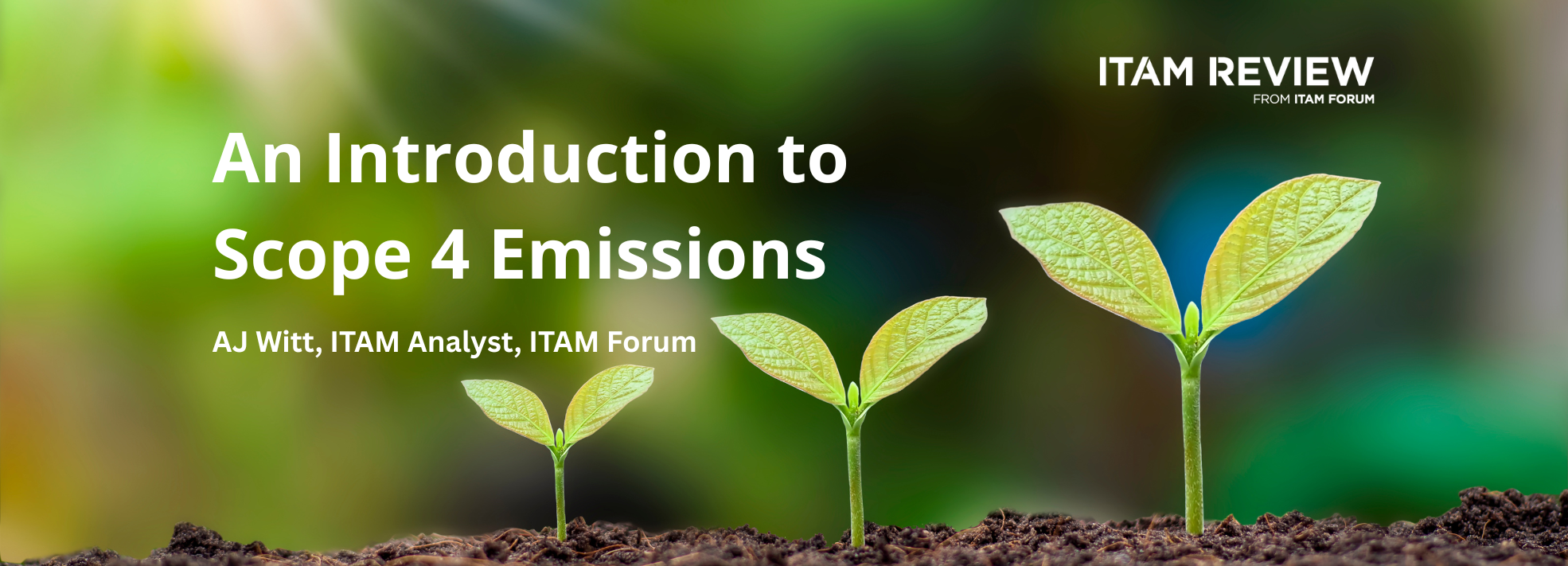Discussing FinOps with Flexera’s Cloud Lead
This week we spoke with Jeremy Chaplin, Cloud lead at Flexera about the ins and outs of FinOps and its interactions with ITAM. But you’ve probably never heard of FinOps before, right…?
Clearly, I’m joking. EVERYONE IS TALKING ABOUT FINOPS RIGHT NOW. You would be forgiven for thinking FinOps has come out of nowhere, but it’s a trend that has been bubbling away for a few years now. If 2022 was the year FinOps took off, 2023 feels like the year it really blew up.
All the cool kids, they seem to fit in
We first wrote about FinOps when it was just emerging as a trend – in fact Wisdom EMEA 2019 was the first event to feature a FinOps session on the agenda. Yes, we like to think we were covering FinOps before it was cool.
Maintaining our credentials as the cool kids in town, we will be combining FinOps with trains this September, when we host Wisdom Unplugged 2023 at the London Transport Museum. As Flexera’s Cloud Lead and the company’s host for the upcoming event, now felt like a good time to explore Jeremy’s thoughts on this trend.
All aboard the FinOps Express – our interview with Jeremy Chaplin
What is your view on the evolution of FinOps as an emerging trend?
FinOps is a really collaborative community that I love being a part of. In the earliest stages there was a small online community which has rapidly evolved and matured into the FinOps we know today which regularly has up to 1000 attendees for their regular online meetings. But it is worth remembering that the term FinOps evolved as a name for something people were already doing. It’s not like people weren’t trying to manage their cloud costs before. But it’s grown massively in recent years. The number of delegates at a recent FinOps conference in the US is a good indicator of the accelerating interest in this trend, with over 1,200 delegates attending this year. Last year the conference had 400 delegates, so you can see the speed of momentum behind FinOps.
What is the state of play when it comes to FinOps as a trend, and the goal of ITAM and FinOps working together?

Early iterations of the FinOps Framework were very focussed on just public cloud – but over time the community has recognised how it intersects with other disciplines and frameworks e.g. ITFM, ITAM, software license management etc. and the need to collaborate with them. We believe the expertise already in the ITAM industry can be of significant benefit to FinOps teams.
We see ITAM as an integral part of FinOps. We’ve tried to think a little bit broader in how we approach it. ITAM is one of the ways we can unlock greater value from cloud. We can take the experience and maturity from ITAM and share these lessons with FinOps.
FinOps originated in public cloud management. It was effectively “Cloud FinOps” and focused on how to make the most of public cloud spend. It was all about understanding the levers you pull and how that affected costs. The licensing aspect didn’t really come into it but we are starting to recognise that licensing makes up a significant proportion of cloud spend, and the traditional rate and usage levers don’t really help us in managing that cost.
The management of SaaS applications is also becoming relevant and often is included in the remit of ITAM or converging FinOps teams. The levers you can pull are different but the principles are the same – you want to get the most value out of the money you are spending. FinOps is now Hybrid FinOps – you want to optimize your IT investment irrespective of where the application or workload is running.
Where are your customers on their FinOps journeys?
Most of our customers are doing something in the FinOps space, with many actively setting up FinOps teams. As reported in Flexera’s State of Cloud report earlier this year, 72% of organisations now have a dedicated FinOps team of some kind. But we are finding that most are still working in siloes.
There’s still a lot of variation in maturity, with some organisations really taking the lead. At our recent FinOps user group meeting, one customer told us they reported directly to the COO and had been asked to establish the FinOps function, so cooperation is inbuilt there.
FinOps traditionally tends to have more senior alignment than ITAM does. A director of FinOps is more likely to report directly to the CIO for example.
Why did you choose to get involved with Wisdom Unplugged this year?
We don’t want FinOps to unnecessarily reinvent the wheel. Unlocking more value from IT spend is a common objective between FinOps and ITAM so there is incentive for both to learn from each other.
We should also be mindful that while cloud is a big focus right now, the hybrid infrastructure isn’t going anywhere soon. There is a continued need for ITAM. The need for hybrid optimisation isn’t going away. We even know of some customers that are reducing their use of public clouds and bringing resources back on-premises. Ultimately, our IT teams are challenged with managing IT spend in three places – on-premise, SaaS, and public cloud – so that’s how we look at it.
What does Flexera offer when it comes to FinOps?
We have a modular SaaS hosted solution focused on three areas; traditional ITAM, IT visibility and cloud migration and financial management.
We’re now taking advantage of having these three solutions together, and the value propositions that come about when these different datasets are combined. One example of this is Unit Economics, which is a big focus in FinOps right now. Can I work out the cost per customer or cost per transaction for example by pulling all the relevant data together which includes licensing, human capital and other costs?
Sustainability is another area where we’ve done a lot of work to produce emissions reports for our customers. With the data we already have across our various modules we are looking to build a holistic view of sustainability for our customers.
Read additional Flexera FinOps content:
- Flexera launches FinOps solution
- Cloud investment remains strong despite economic uncertainty: Flexera cloud report 2023
Lastly, with Unplugged taking place at the London Transport Museum I just have to ask, what is your favourite tube line and why?
To be honest, having worked in London I do not have a favourite tube line. I don’t believe that anybody really does. Having said that I am keen to try the new Elizabeth line.
My favourite transport right now is Uber – it just works wherever you are. There is a good analogy between Uber and FinOps. Using Uber is like using Pay-As-You-Go cloud resources – it’s an on-demand service that you can pay for when you need to get somewhere. But if you want the convenience of having immediate access to a car, 24×7, then having an Uber parked on your drive all day is going to get really expensive! In this situation leasing a car is going to be much cheaper, which is very much akin to a commitment for a savings plan or reserved instance in public cloud.
Can’t find what you’re looking for?
More from ITAM News & Analysis
-
Broadcom vs Siemens AG - A Brewing Storm
The ongoing legal battle between VMware (under Broadcom ownership) and Siemens is yet another example of why ITAM goes far beyond license compliance and SAM. What might, at first glance, appear to be a licensing dispute, ... -
Shifting Left Together: Embedding ITAM into FinOps Culture
During one of the keynotes at the FinOps X conference in San Diego, JR Storment, Executive Director of the FinOps Foundation, interviewed a senior executive from Salesforce. They discussed the idea of combining the roles of ... -
Addressing the SaaS Data Gap in FinOps FOCUS 2.1
I recently reported on the FinOps Foundation’s inclusion of SaaS and Datacenter in its expanded Cloud+ scope. At that time, I highlighted concerns about getting the myriad SaaS companies to supply FOCUS-compliant billing data. A couple ...
Podcast
ITAM training
Similar Posts
-
The M&S Cyberattack: How IT Asset Management Can Make or Break Your Recovery
Marks & Spencer (M&S), the iconic UK retailer, recently became the latest high-profile victim of a devastating cyberattack. Fellow retailers The Co-Op and Harrods were also attacked. Recent reports suggest the rapid action at the Co-Op ... -
AI in ITAM: Insightful Signals from the Front Line
During our Wisdom Unplugged USA event in New York in March 2025, we engaged ITAM professionals with three targeted polling questions to uncover their current thinking on Artificial Intelligence—what concerns them, where they see opportunity, and ... -
How ISO/IEC 19770-1 Can Help Meet FFIEC Requirements
In the world of ITAM, the regulatory spotlight continues to intensify, especially for financial institutions facing increasing scrutiny from regulatory bodies due to the growing importance of IT in operational resilience, service delivery, and risk management. ... -
An Introduction to Scope 4 Emissions
Executive Summary For ITAM teams, sustainability is a core responsibility and opportunity. Managing hardware, software, and cloud resources now comes with the ability to track, reduce, and report carbon emissions. Understanding emission scopes—from direct operational emissions ...




